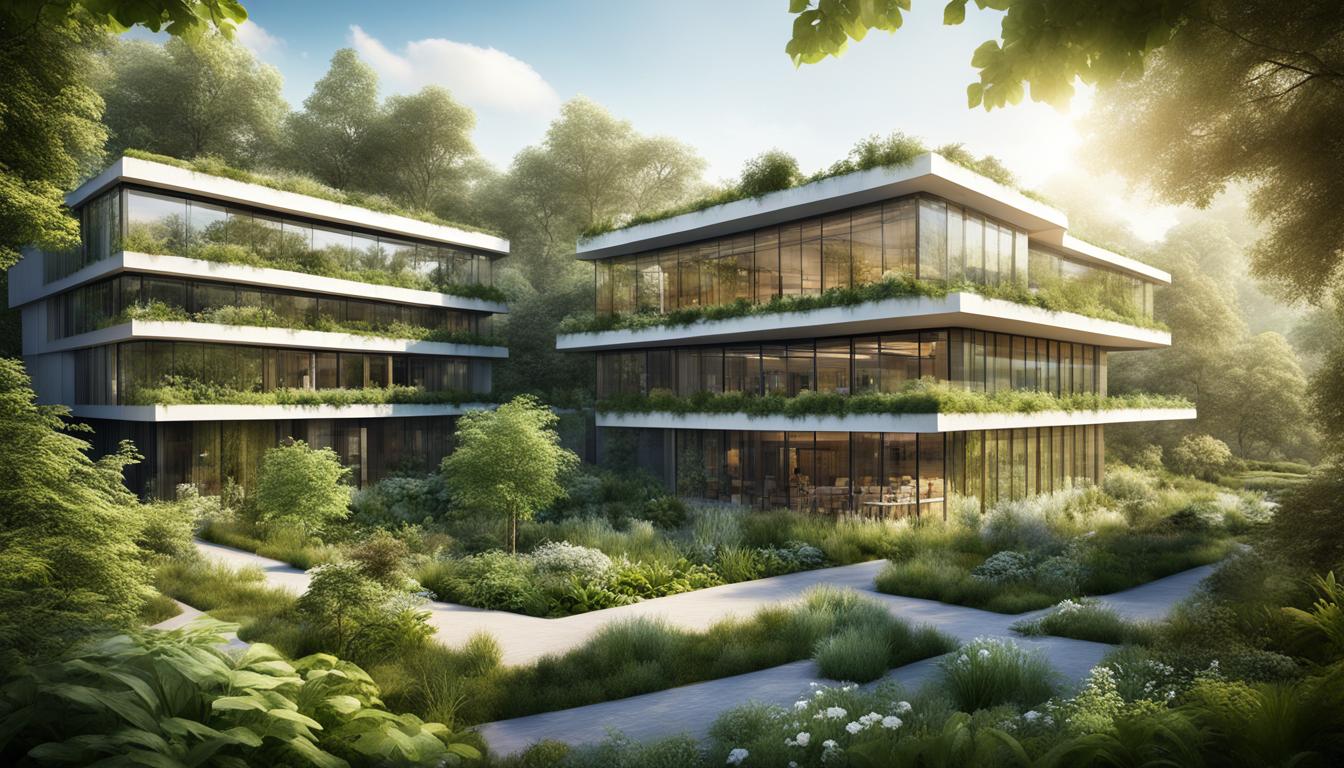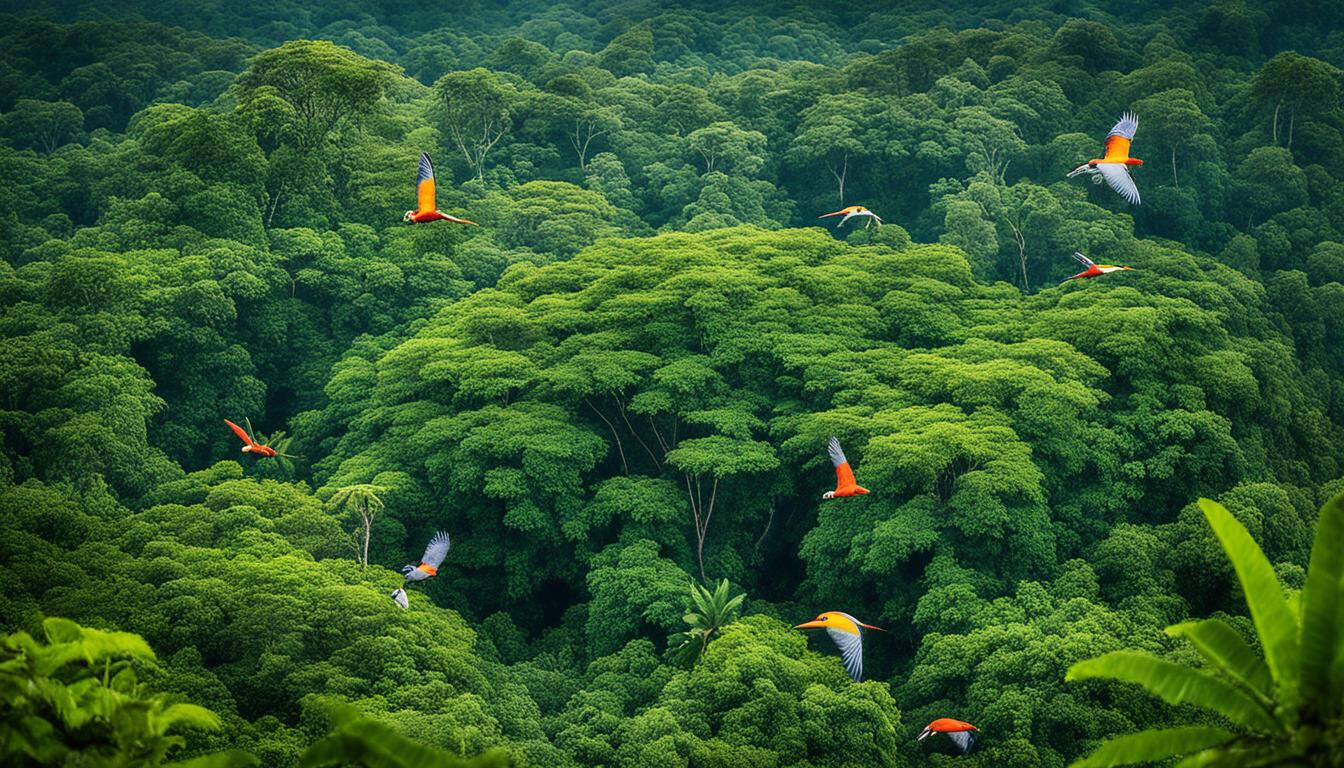Green Architecture: Designing for Biodiversity in Urban Spaces
Did you know a square metre of green roof can host 2,000 invertebrates? This shows how vital biodiversity in urban spaces is for healthy ecosystems. It also improves people’s lives. As our cities grow, blending urban ecology and green infrastructure into designs is key. This helps save nature and builds sustainable cities.
Picture walking in a busy city. You’re surrounded by tall, cold buildings and the sounds of cars. The only green comes from a few plants in windows. Now, imagine something different. You see a unique building that feels part of the natural world. Its walls overflow with greenery, inviting birds and butterflies. This is Architectural Ecology. It merges the city and nature. It’s all about creating spaces that are good for biodiversity, sustainability, and people.
Key Takeaways
- Architectural Ecology aims to blend city living with nature.
- Biodiversity is key in making buildings and city areas sustainable.
- Places like parks help nature thrive in urban areas, making them better for us.
- Using eco-friendly materials and ways to build lessens harm to the earth.
- Everyone needs to work together to build cities that are good for nature.
The Concept of Architectural Ecology
Architectural Ecology is a new way of looking at design. It’s all about marrying biodiversity and sustainability with our buildings and cities. The goal is to make our urban spaces, where we live, work, and play, more eco-friendly. This way, nature can thrive alongside our urban life.
Biophilic Design Principles
Biophilic design aims to bring us closer to nature in our daily lives. It uses elements like plants, natural light, and water to enrich our spaces. This makes us feel more at home with the environment around us. Such designs also boost our mental and physical well-being, creating a sense of unity with nature.
The Importance of Green Infrastructure
Think of green infrastructure as our cities’ natural life support. It includes parks, gardens, and trees in urban areas. These places are not just pretty; they’re vital for many plants and animals to survive. They also help keep our air clean, control temperatures, and handle heavy rain, making our cities nicer and greener.
Sustainable Materials and Construction Practices
When we talk about sustainable materials and construction practices, we’re aiming to build greener. This means picking materials and methods that are good for the planet. Architects and builders focus on things like using materials that don’t harm the earth. They design buildings to use less energy and produce less waste. By doing this, they help make our urban areas healthier and more eco-friendly.
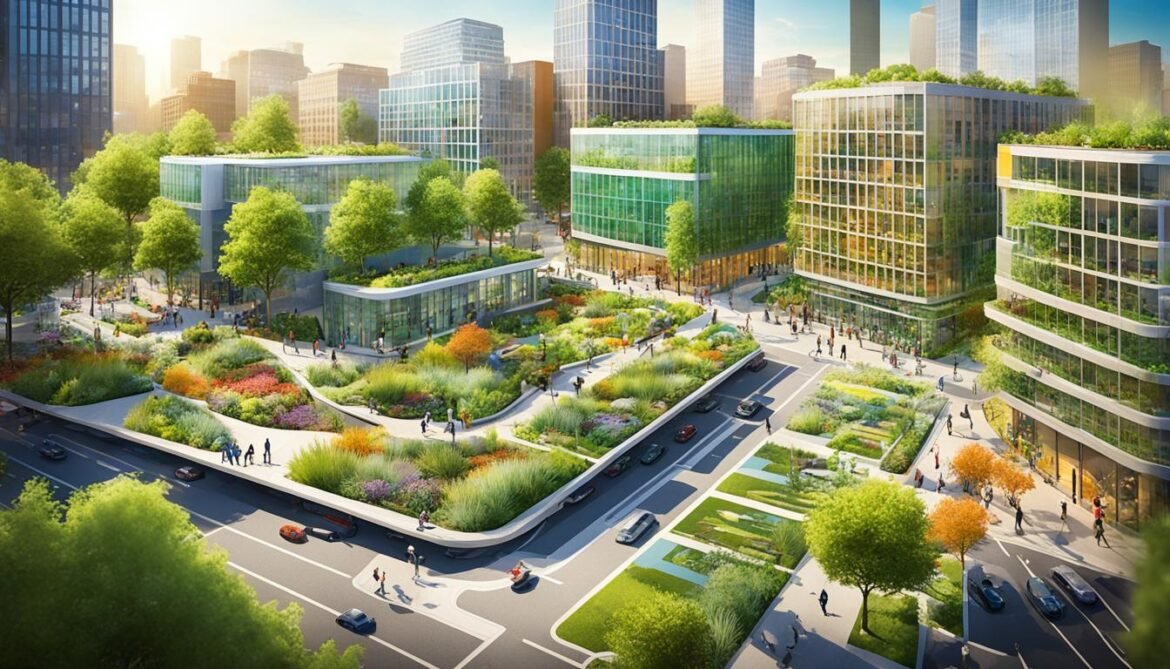
The Role of Biodiversity in Building Design
Biodiversity is crucial in designing buildings. It helps maintain healthy ecosystems. By including diverse life, we create places that are good for people and nature.
Biophilic Design for Human Well-being
Biophilic design brings nature into buildings. It improves our mental health and how well we work. This way, we feel connected to the world around us.
Preserving Natural Habitats
Saving natural habitats helps cities grow in a good way. It protects the homes of different plants and animals. Our cities still buzz with life because of this care.
Supporting Local and Regional Ecosystems
Designs that cherish our local ecosystems help keep our towns in balance. This work is good for nature and for people. It makes our living spaces healthier and more alive.
Biodiversity in Urban Spaces
Over half the world’s people now live in cities. By 2050, this could rise to 68%. As cities grow, they eat up natural lands. Yet, studies show that cities are key for saving plants and animals. Some cities are home to many different wildlife.
The Importance of Urban Biodiversity
Urban biodiversity is very important. It keeps cities healthy and helps them bounce back from problems. For us, it cleans the air, keeps the climate nice, and reduces floods.
Ecosystem Services and Human Well-being
Ecosystem services are the goods and benefits nature gives us. It’s things like breathing clean air, health from plants, or natural disaster safety. This shows how much biodiversity in urban spaces helps us. By keeping urban nature rich and varied, cities make life better for everyone. They also help the planet.

Urban Strategies for Enhancing Biodiversity
Cities are growing, making it more important to keep nature in mind. Some cities are leading the way, like Singapore. They aim to become a “City in Nature” by adding new parks and gardens. They’re also helping special plants and animals (species) and making sure everyone lives near a park.
Green Infrastructure and Urban Greening
To boost urban biodiversity, cities are adding more green spaces. This includes parks, gardens, and even gardens on walls. These new green areas help wildlife and make the city a nicer place to live. They improve the air, make it cooler, and help people feel better.
Habitat Restoration and Native Plantings
Cities are not just building new green areas; they’re also fixing up old ones. They use plants that naturally grow in that area. This helps animals find food and shelter. It makes the city nature-rich and shows off its natural history.
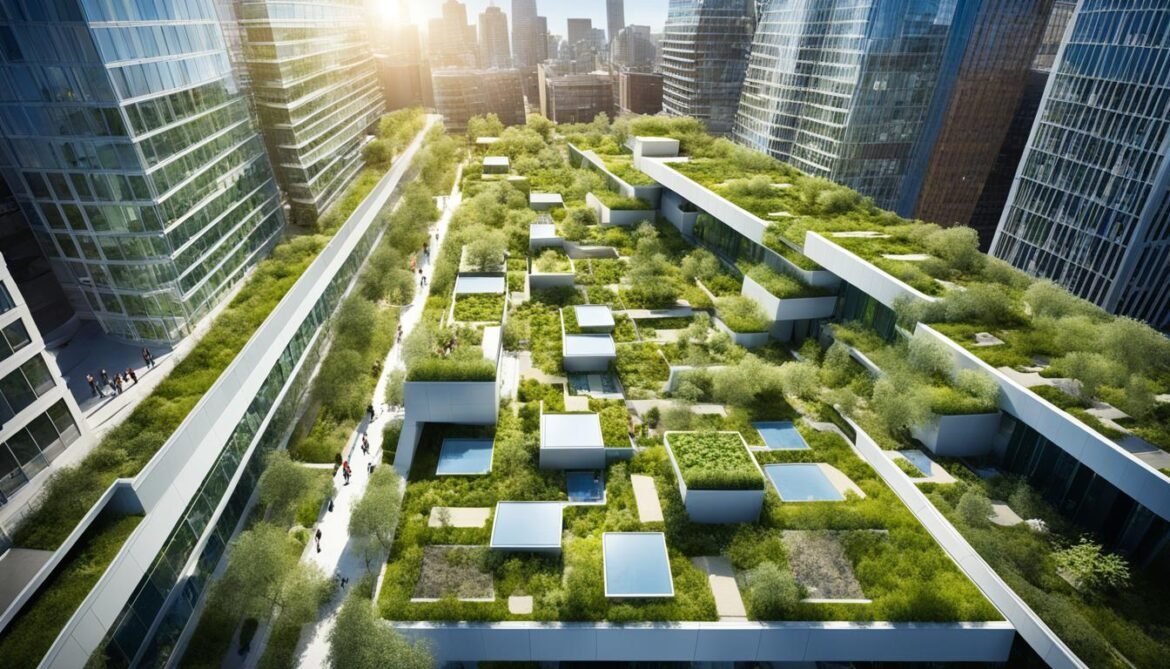
Architectural Contributions to Urban Biodiversity
Urban areas are becoming key in the fight for global biodiversity. Architecture helps by offering homes in new buildings, keeping local habitats safe, and connecting them to larger areas. Buildings with green roofs, facades, and big parks can be home to many creatures. They boost nature’s variety in the cities.
Creating Habitat Opportunities
Architects and designers are essential in providing homes for wildlife. They add nest boxes, insect shelters, and homes for bats. These features help a lot of animals thrive. They are cleverly designed to fit into the overall look of a place. This ensures they truly help in supporting local urban biodiversity.
Protecting On-Site Habitats
Preserving local habitats is crucial for architects, too. It means keeping old trees, wetlands, and similar natural spaces safe. Protecting these areas helps in keeping the local environment’s balance, ensuring it remains intact. Doing so prevents any harm to the area’s wildlife during development.
Green Roofs and Vertical Gardens
Green roofs and vertical gardens are becoming very popular for urban biodiversity. They not only look good but offer homes to nature. Creatures like bees, birds, and bugs find these places very welcoming. These green spaces also use native plants, which is great for the city’s overall variety of life.
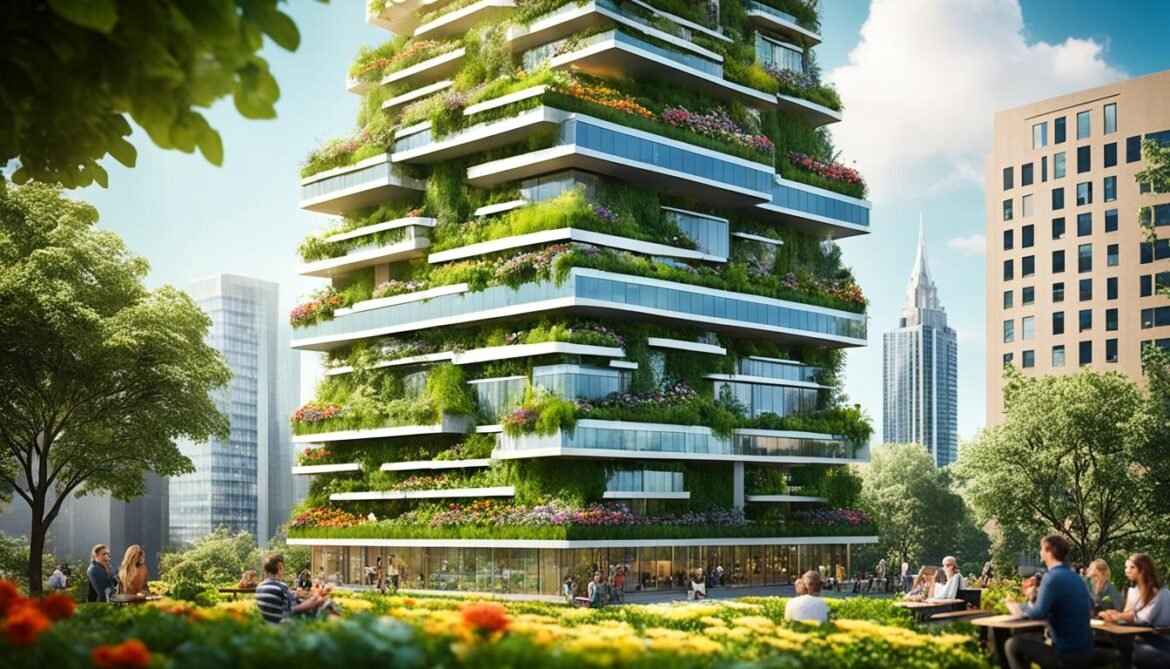
The Environmental Impact of Buildings
Buildings play a big part in our environmental impact. They use a lot of energy and create many greenhouse gases. Sustainable architecture aims to cut down on this. It does so by designing energy-efficient buildings. These buildings use less resources and produce fewer harmful emissions. They also make the most of renewable energy.
Sustainable Architecture and Energy Efficiency
Sustainable architecture is all about creating buildings that use energy wisely. They include things like solar panels and geothermal systems. These features help buildings use less energy. They also lower the buildings’ carbon footprint. This means they’re less bad for the environment.
Green Building Certification Programs
Programmes like LEED (Leadership in Energy and Environmental Design) are important. They help recognise buildings that are good for the planet. These green building certification programmes set out how to build in environmentally friendly ways. They promote good design that’s both energy-efficient and eco-friendly.
Life Cycle Assessment of Materials
When designing buildings, it’s important to look at materials from start to finish. This is called life cycle assessment. It looks at the impact of making, using, and getting rid of materials. By picking materials that are kinder to the planet, architects can make buildings more eco-friendly. This way, they lessen the buildings’ overall impact.
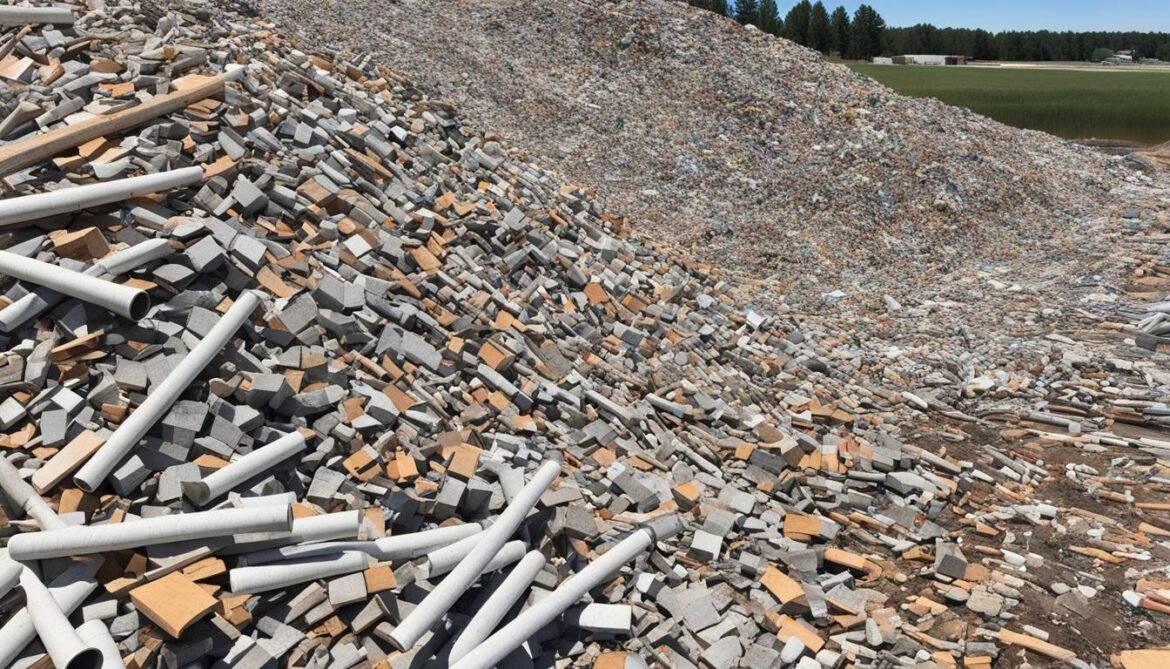
Strategies for Minimising Environmental Impact
Sustainable architecture is about more than energy efficiency. It’s a full plan to cut down how much the environment is affected by buildings. This approach involves using less water, more clean energy, and making sure to keep materials in use instead of throwing them away. Each step helps lessen the building’s impact on our planet.
Renewable Energy Sources
Solar panels are a big part of sustainable building design. They use the sun’s power to make electricity. This means buildings can use less fossil fuels and be kinder to the planet. Solar energy systems also help reduce the overall carbon cost of building and running a place.
Water-Efficient Systems
Being smart with water is another focus of sustainable architecture. This means using plumbing that doesn’t waste water, treating used water to use again, and planting gardens that don’t need too much water. These choices cut down on how much water buildings use. This helps save this scarce resource.
Recycling and Waste Reduction
Sustainable building works hard to cut waste and reuse a lot. It picks materials that have been used before, handles trash well within the place, and encourages people to throw things away properly. By doing this, buildings throw away less, help make a circular economy, and do their part to protect the planet.
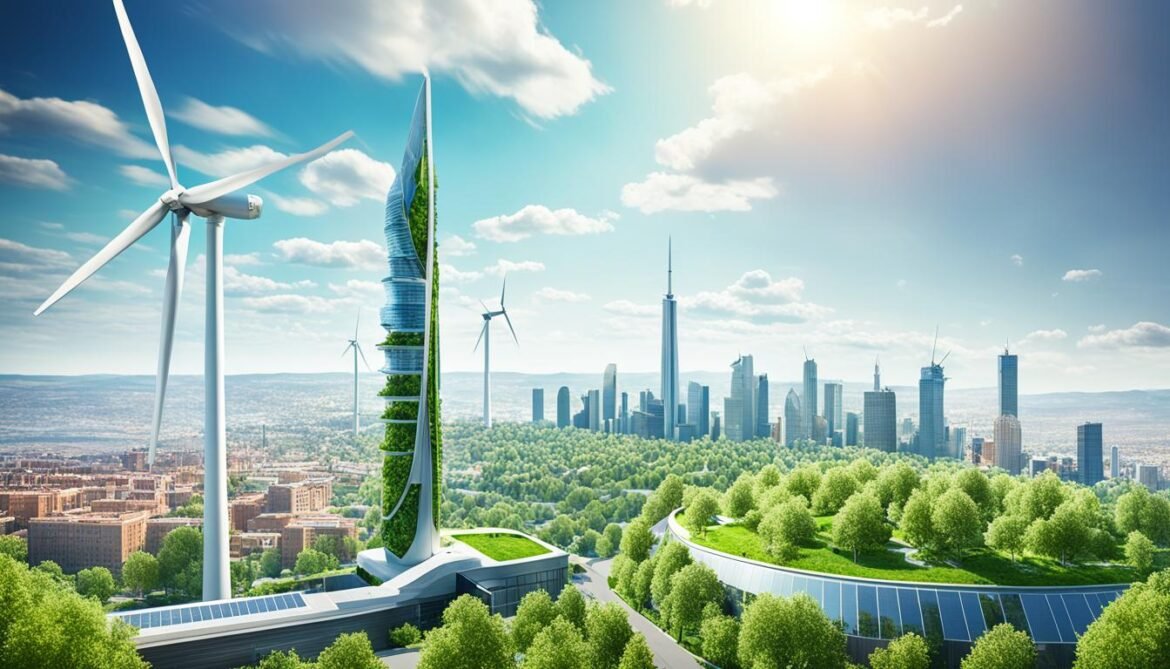
By putting all these ideas together, sustainable building can make a big difference for the earth. Using renewable energy, saving water, and being mindful of trash all help lower the harmful effects of buildings. This means using fewer resources, producing less pollution, and leaving a smaller footprint on our world.
Collaborative Efforts for Biodiversity Conservation
Turning around the drop in urban biodiversity needs many groups to join efforts. This includes experts, city leaders, and people living there. Together, they aim to transform cities into places where many species can flourish. This teamwork is key to making lasting and positive changes.
Partnerships with Scientific Bodies
Working with scientists and their organisations offers a deep pool of knowledge for those shaping our cities. This includes architects, urban planners, and local government officials. Such collaborations lead to smarter choices and actions. They also ensure projects for biodiversity are backed by current research.
Engaging Urban Planners and Authorities
Urban planners and authorities play a vital role in merging biodiversity goals with city planning. Cooperation with these experts helps ensure nature’s needs are met in every step of urban development. This collaboration pushes for designs and policies that keep biodiversity in mind from start to finish.
Community Involvement and Participatory Design
Community involvement and participatory design are crucial. They build bridges between people, their surroundings, and the living creatures around them. By inviting locals to share their ideas and opinions, designers and architects nurture a love for the environment. This approach encourages everyone to take part in caring for and improving their local nature.
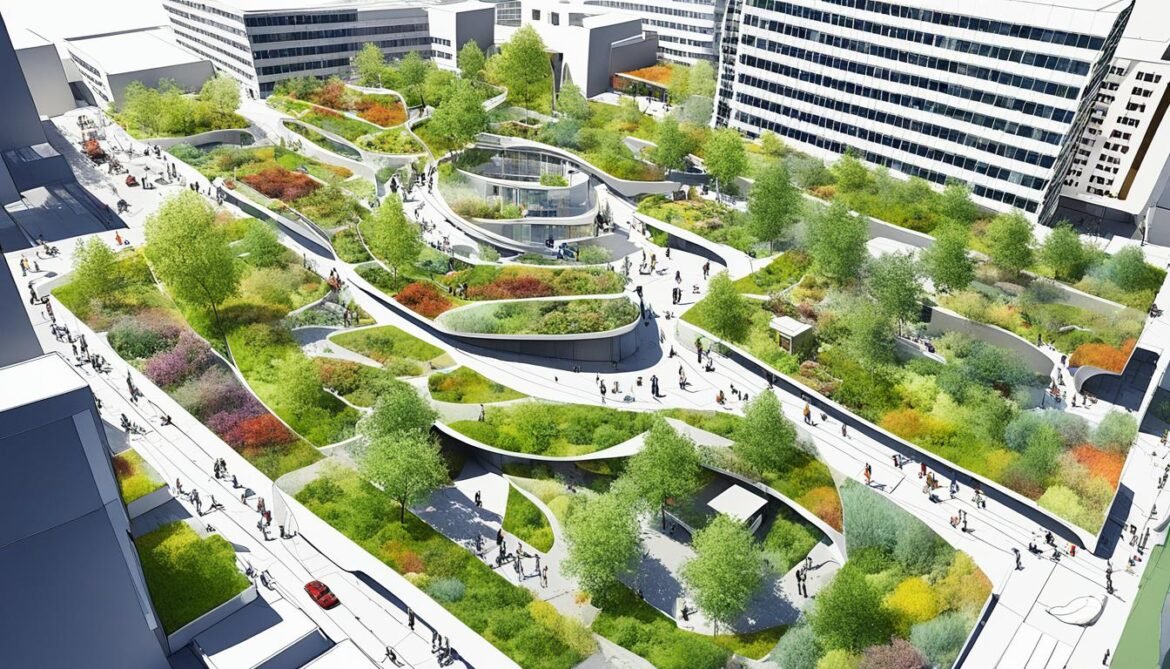
The Future of Biodiversity-Driven Urban Design
The global biodiversity crisis is a key issue. Cities and urban design can help save and restore ecosystems. A future of biodiversity-driven urban design means building cities with sustainable urbanisation. This includes using nature-based solutions and caring for biodiversity in urban planning. Such an approach is vital for making cities where people and nature live well together.
Advancing Sustainable Urbanisation
Urban areas are growing fast. It’s important to develop them in a way that’s kind to the planet. This means using clean energy and saving water. It also means reusing things whenever possible. By following these ideas, we can have cities that are green and ready for climate changes.
Promoting Nature-Based Solutions
Adding nature-based solutions to city designs is crucial. It boosts biodiversity and helps ecosystems stay healthy. This can be done by adding green spaces like parks and gardens. Also, building with eco-friendly materials and adding green roofs helps nature in the city to flourish.
Integrating Biodiversity into Urban Planning
Long-lasting biodiversity-driven urban design needs to put nature first in the city planning. This means working with scientists and local people to map out important natural areas. It also involves connecting habitats to help wildlife move around. Putting biodiversity at the heart of urban planning helps create sustainable cities that welcome all forms of life.
Case Studies: Best Practices in Biodiversity-Focused Architecture
The use of biodiversity in cities is quickly growing. Architects and designers are at the forefront. They’re showing off new and exciting biodiversity-focused architecture. Let’s look at some shining examples in sustainable design.
The Oasia Hotel Downtown in Singapore is a standout case. WOHA designed this iconic tower. Its green facade is home to many birds and insects. This creates a lively urban ecosystem in the city.
The use of vertical gardens and local plants has many benefits. It boosts biodiversity. It also makes the people working and living there feel better.
| Project | Location | Key Biodiversity-Enhancing Features | Outcomes |
|---|---|---|---|
| Oasia Hotel Downtown | Singapore |
|
|
| Vancouver House | Canada |
|
|
| Bosco Verticale | Italy |
|
|
In Canada, the Vancouver House stands out. It’s packed with green roof gardens and habitat creation. These features support the local ecosystem. They also help clean the air and cool the city.
The Bosco Verticale in Milan, Italy, is a unique vertical forest. Created by Stefano Boeri Architetti, it’s like a garden in the sky. It’s full of trees and plants that provide homes for wildlife. Plus, they help trap carbon and make the city’s climate better.
These case studies clearly show the benefits of adding nature to buildings. By making room for nature, architects and designers are making our cities better places. They’re helping cities be both more sustainable and more enjoyable for everyone.
Conclusion
Bringing biodiversity into our cities through green building is vital. It helps in making our cities sustainable and tough. It lets architects and designers help save local ecosystems and support plant and animal life. Also, it makes city living better for people.
As our world gets more urban, the call for nature-friendly city design will increase. This shows how important it is to work together to keep our cities and nature in balance. By doing so, we can make cities where both humans and nature can thrive.
The key to future cities is blending living spaces with nature. This is a path to a sustainable and greener tomorrow. With new ideas, more study, and everyone pitching in, we can turn our cities into places filled with life. We can make cities that are good for us and the Earth for many years.





